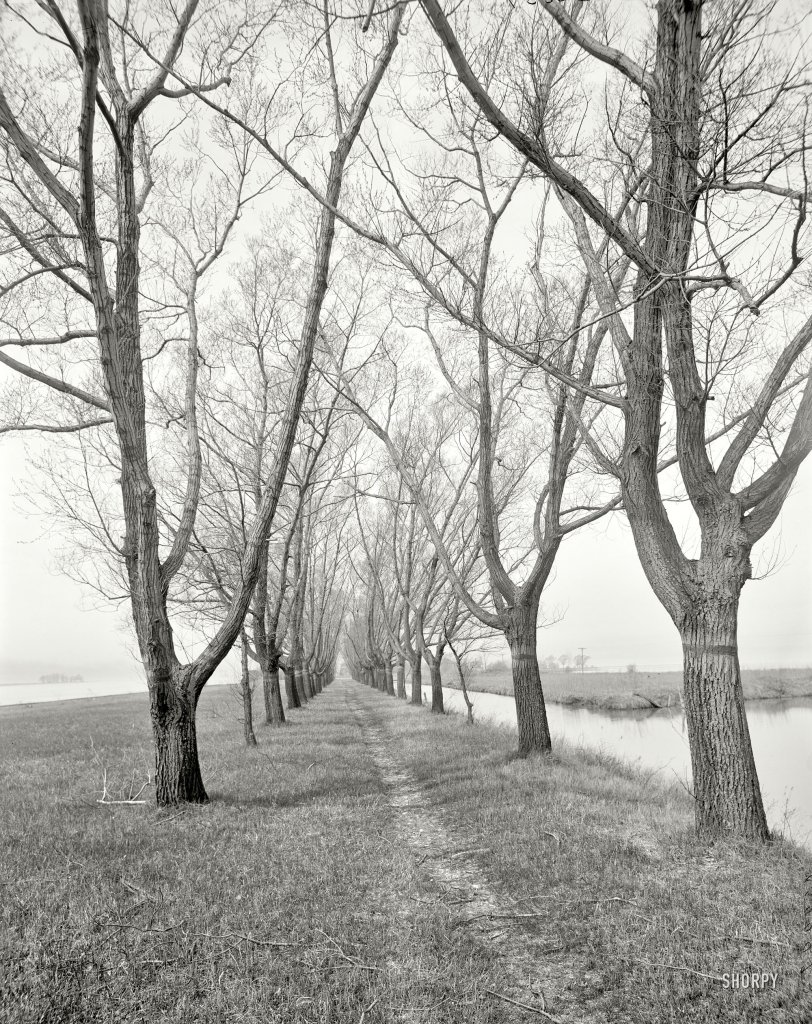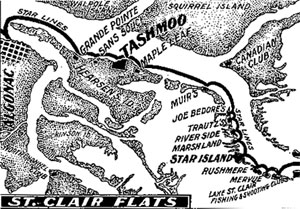


Framed or unframed, desk size to sofa size, printed by us in Arizona and Alabama since 2007. Explore now.
Shorpy is funded by you. Patreon contributors get an ad-free experience.
Learn more.

- Tough Guys
- Lost in Toyland
- And without gloves
- If I were a blindfolded time traveler
- Smoke Consumer Also Cooks
- Oh that stove!
- Possibly still there?
- What?!?
- $100 Reward
- Freeze Frame
- Texas Flyer wanted
- Just a Year Too Soon
- WWII -- Replacing men with women at the railroad crossing.
- Yes, Icing
- You kids drive me nuts!
- NOT An Easy Job
- I wonder
- Just add window boxes
- Icing Platform?
- Indiana Harbor Belt abides
- Freezing haze
- Corrections (for those who care)
- C&NW at Nelson
- Fallen Flags
- A dangerous job made worse
- Water Stop
- Passenger trains have right of way over freights?
- Coal
- Never ceases to amaze me.
- Still chuggin' (in model form)
Print Emporium
These Trees: 1910

St. Clair Flats, Michigan, circa 1910. "Willow Avenue, Star Island." 8x10 inch dry plate glass negative, Detroit Publishing Company. View full size.
I think I found the "Flats."
The St. Clair Flats is the name given to the northeast section of Lake St. Clair along the border with Canada near Harsens Island and Algonac, Michigan.
I found this image at the web site for the Harsens Island Historical Society. Note the reference to Star Island (lower right) and a ship often seen on Shorpy, the Tashmoo.

C Flats
The St. Clair Flats, where the St. Clair River empties into Lake St. Clair, is the largest freshwater river delta in the world. Star Island House was on the south channel through the delta.


Current state
I would love to see what this area looks like today.
Tree lines
I think tterrace has it exactly right, some sort of sticky gunk to keep insects from climbing from the ground to the tasty leaves. In this case it is probably to protect against tent caterpillars or something similar. These days when we have a possible infestation developing they tell us to put a band of insulation around the trunk of the tree, then cover the insulation with plastic, and then put the gunk like Tanglefoot on the insulation. This was seems quicker if not as efficient.
My kind of "Avenue"
It's high time for a stroll down a grassy path on what appears to me to be an early spring day. I agree with tterrace; those lines are some sort of pest control material that an arborist has applied to protect them. Ironically, sometimes even used motor oil is employed to defend trees from certain insects! (click here for a really technical discussion)
Lines on the trees
My father used to circle the trunks of his fruit trees with some thick, sticky black gunk to trap ants and other destructive creepy crawlies trying to make their way up. Maybe that's some similar stuff, or its residue, here. Not that these are fruit trees, obviously.
Marks on trees
It looks like they were trying to prevent an insect infestation. I can remember doing this to our elm trees at home. You have to get a draw knife and shave the rough bark down fairly smooth but not cut into the live bark. Then you spread a very sticky substance onto the trimmed area. I think one brand was called Tanglefoot. Looked like Vaseline but was like resin. Any bugs that tried to crawl up the tree got stuck in the mess and died. Good for gypsy moths too.
What are those lines?
There are marks on the trees just below where the branches split off.
























On Shorpy:
Today’s Top 5